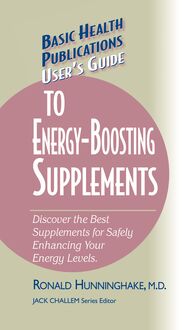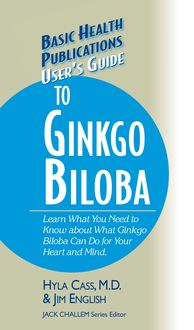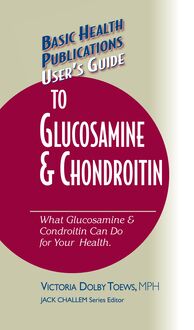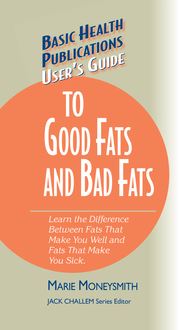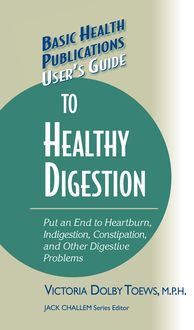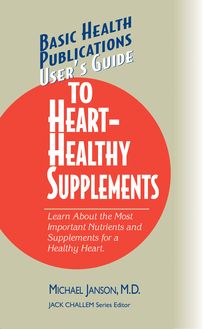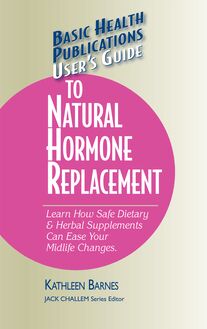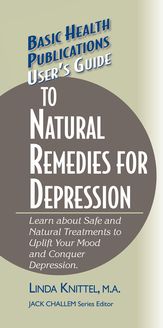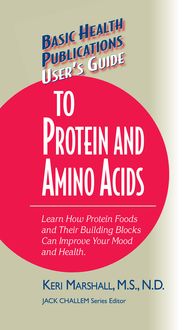-
 Univers
Univers
-
 Ebooks
Ebooks
-
 Livres audio
Livres audio
-
 Presse
Presse
-
 Podcasts
Podcasts
-
 BD
BD
-
 Documents
Documents
-
- Cours
- Révisions
- Ressources pédagogiques
- Sciences de l’éducation
- Manuels scolaires
- Langues
- Travaux de classe
- Annales de BEP
- Etudes supérieures
- Maternelle et primaire
- Fiches de lecture
- Orientation scolaire
- Méthodologie
- Corrigés de devoir
- Annales d’examens et concours
- Annales du bac
- Annales du brevet
- Rapports de stage
La lecture à portée de main
Vous pourrez modifier la taille du texte de cet ouvrage
Découvre YouScribe en t'inscrivant gratuitement
Je m'inscrisDécouvre YouScribe en t'inscrivant gratuitement
Je m'inscrisEn savoir plus
Vous pourrez modifier la taille du texte de cet ouvrage
En savoir plus

Description
Sujets
Informations
| Publié par | Turner Publishing Company |
| Date de parution | 01 janvier 2003 |
| Nombre de lectures | 0 |
| EAN13 | 9781591206323 |
| Langue | English |
| Poids de l'ouvrage | 1 Mo |
Informations légales : prix de location à la page 0,0298€. Cette information est donnée uniquement à titre indicatif conformément à la législation en vigueur.
Extrait
The information contained in this book is based upon the research and personal and professional experiences of the author. It is not intended as a substitute for consulting with your physician or other healthcare provider. Any attempt to diagnose and treat an illness should be done under the direction of a healthcare professional.
The publisher does not advocate the use of any particular healthcare protocol but believes the information in this book should be available to the public. The publisher and author are not responsible for any adverse effects or consequences resulting from the use of the suggestions, preparations, or procedures discussed in this book. Should the reader have any questions concerning the appropriateness of any procedures or preparations mentioned, the author and the publisher strongly suggest consulting a professional healthcare advisor.
Series Editor: Jack Challem Editor: Roberta W. Waddell Typesetter: Gary A. Rosenberg Series Cover Designer: Mike Stromberg
Basic Health Publications User’s Guides are published by Basic Health Publications, Inc.
8200 Boulevard East North Bergen, NJ 07047 1-800-575-8890
Copyright © 2003 by Bill Sardi
ISBN-13: 978-1-59120-632-3
ISBN: 1-59120-044-X
All rights reserved. No part of this publication may be reproduced, stored in a retrieval system, or transmitted, in any form or by any means, electronic, mechanical, photocopying, recording, or otherwise, without the prior written consent of the copyright owner.
Printed in the United States of America
10 9 8 7 6 5 4 3 2 1
C ONTENTS
Introduction
1. Vitamins
2. Minerals
3. The Mineral Chelator Phytic Acid
4. Amino Acids
5. Essential Fatty Acids
6. Non-Vitamin Nutrients
7. Carotenoids
8. Bioflavonoids
9. Herbs and Other Supplements
10. Hyaluronic Acid
Conclusion
Selected References
Other Books and Resources
I NTRODUCTION
I
nevitably, eyesight diminishes with advancing age. The incidence of eye disease jumps by ten times among older people. Couple this with the fact that we are living longer, into our seventh and eighth decades of life, and it doesn’t take long to understand that the challenge of treating eye disease now and in the future is going to be very burdensome.
Cataracts
An opacity or cloudiness in the normally clear crystalline lens used for focusing on near objects.
The focusing lens of the eye loses 1 percent of its transparency for every year of life until, by age sixty, about two-thirds of us show signs of early cataracts. By age eighty, an adult will need a 200-watt light bulb to visualize reading materials compared to when they were twenty years old and only needed a sixty-watt bulb to read indoors. For most Americans, a cataract operation is in their future.
Glaucoma is a “sneak thief of sight” because it slowly robs a person of their side vision without becoming apparent to most adults. Half the cases go undetected. Although current treatments, such as eye drops and laser treatments, may reduce abnormally high fluid pressure that could destroy the optic nerve, in the long run, many adults still develop this severe visual disability. While only about 2 percent of adults over age forty have glaucoma, this figure jumps up to more than 5 to 12 percent in the older age brackets. And even the best treatment does not address the form of glaucoma caused by nerve toxins.
Diabetes affects about 8 to 12 percent of American adults. The rate of diabetes is rising so fast in the United States that it has health authorities alarmed, if for no other reason than that severe visual problems are highly prevalent among adults who have trouble regulating blood sugar. Swelling and hemorrhaging at the back of the eyes, along with sugar cataracts, often cause severe visual handicaps in people with diabetes.
Macular degeneration is still one of the most depressing eye disorders because often people don’t discover it until they close one eye and discover that their other eye can no longer see objects in its central visual field. Then their eye doctor makes the diagnosis of macular degeneration and indicates there is nothing that can be done to restore the lost vision. Worse yet, in a four-year period of time, the problem may spread to the opposing eye. About a third of older Americans exhibit early signs of macular disease and about 9 percent have actually lost central vision.
The most common eye problem seen in eye doctors’ offices is dry eye. Doctors tend to dismiss it as a trivial problem, but it is the most irritating because dry eyes make it impossible to wear contact lenses, and artificial tear preparations provide only temporary relief.
The good news is that there are natural therapies for all these eye disorders that are often overlooked by conventional medicine. Given that the loss of sight is the number two health fear behind cancer, it would behoove all Americans to learn more about preventive eye care.
It’s never too late to begin learning about healthy foods and food supplements for the eyes. Even if you have lost some vision, nutritional therapy may help you hang on to your remaining vision.
Nutrition can be so confusing to understand. There are plenty of research studies, but can we plan a course of action from these studies? Do we just eat more plant foods, or do we need food supplements to reduce our risk of age-related vision loss?
There are many newly published reports on how nutritional factors may be beneficial for your eyes, and it’s now time to put into practice what we know about nutrition and the eyes. This book will help you to do that.
Most of the nutritional research regarding eye health is centered on antioxidants, the antirusting agents. These antioxidants work in tandem, that is, they work better together rather than alone. For example, vitamin E donates an electron to prevent fatty tissues in the eyes from becoming oxidized, but in doing so it becomes oxidized itself. So, along comes vitamin C, which donates an electron to vitamin E and reactivates it. And, bioflavonoid pigments, such as bilberry, blueberry, and cranberry, help to maintain vitamin C levels in the eyes, so they are synergistic. The trace mineral selenium combines with vitamin E to produce an antioxidant enzyme (glutathione peroxidase) that cleans up cellular debris at the back of the eyes. Along with vitamin C, glutathione and lutein are probably the most potent nutritional remedies for eye disease today, but there are many others, so you don’t need to become fixated on any single nutrient.
It helps to know the nutritional geography of the eyes. Which nutrients are found in the various eye structures and how are they involved in preventing eye disorders? Here is a brief overview of the tissues of the eyes and the potentially beneficial nutrients for them.
• Aqueous fluid: glutathione, lutein, vitamin C, vitamin E
• Blood supply (choroid and blood capillaries): bilberry, ginkgo biloba, magnesium
• Bruch’s membrane: mineral chelators, such as IP 6 rice-bran extract
• Cornea: coenzyme Q 10 , collagen, hyaluronic acid
• Fluid drain of the eyes (trabecular meshwork): hyaluronic acid, vitamin C
• Focusing lens (where cataracts occur): glutathione, lutein, vitamin C, vitamin E
• Optic nerve: glutathione, vitamin B 12
• Photoreceptor cells (where macular degeneration and night blindness occur): DHA/ omega-3 oils, rods and cones, vitamin A
• Retinal cleansing cells (retinal pigment epithelium): selenium and vitamin E
• Retinal nerve layer: glutathione, hyaluronic acid, lutein, and zeaxanthin
• Sclera (white of the eyes): collagen, hyaluronic acid, iron, proline, vitamin C
• Tear film: essential oils for oily layer, vitamin A for mucin
• Vitreous jelly (where floaters occur): hyaluronic acid, water
People frequently ask, can’t I just eat the right foods and keep my vision? Yes, foods are very important for the maintenance of sight. For example, there is a plant-pigment duo, lutein and its cousin zeaxanthin, which is lacking in many diets unless a person consumes a lot of spinach or kale. And with advancing age, the eyes need more antioxidant protection from lutein and zeaxanthin than can be provided by foods alone. Food supplements do not replace a good diet, nor does the best plant food diet eliminate the need for vitamin supplements. Some people simply don’t like swallowing vitamin pills, even though they are less problematic and less expensive than many prescription medications. The sooner you begin a food and food-supplement regimen to help maintain your vision, the better off you will be.
CHAPTER 1
V ITAMINS
V
itamins are essential nutritional factors for health. They are grouped into watery (dissolve in water) and fatty (dissolve in fat) vitamins. The water-soluble vitamins include vitamin C and the array of B vitamins. The fat-soluble vitamins are vitamins A, D, E, and K, which are stored in tissues and liver for later use.
Vitamins
Organic substances occurring in small amounts in foods that are required for health.
Vitamin A
Vitamin A plays an essential role in ocular health, both at the front and back of the eyes. Supplemental vitamin A can be both beneficial and potentially troublesome.
Vitamin A for the Front of the Eyes
Vitamin A is required for the production of mucin from glands in the eyelids. Mucin helps the tear film to spread across the cornea and keep it moist. Low mucin levels can result in filmy strands of material inside the eyelids.
Low vitamin A intake may result in foamy gray triangular spots on the conjunctiva, the clear film that covers the surface of the eyes just beneath the eyelids. These are called Bitot’s spots and are seen primarily in cases of malnutrition. A severe deficiency of vitamin A results in a condition called xerophthalmia, which produces symptoms of corneal dryness and ulceration.
Vitamin A for the Back of the Eyes
Vitamin A
A nutritional supplement required for the production of
-
 Univers
Univers
-
 Ebooks
Ebooks
-
 Livres audio
Livres audio
-
 Presse
Presse
-
 Podcasts
Podcasts
-
 BD
BD
-
 Documents
Documents
-
Jeunesse
-
Littérature
-
Ressources professionnelles
-
Santé et bien-être
-
Savoirs
-
Education
-
Loisirs et hobbies
-
Art, musique et cinéma
-
Actualité et débat de société
-
Jeunesse
-
Littérature
-
Ressources professionnelles
-
Santé et bien-être
-
Savoirs
-
Education
-
Loisirs et hobbies
-
Art, musique et cinéma
-
Actualité et débat de société
-
Actualités
-
Lifestyle
-
Presse jeunesse
-
Presse professionnelle
-
Pratique
-
Presse sportive
-
Presse internationale
-
Culture & Médias
-
Action et Aventures
-
Science-fiction et Fantasy
-
Société
-
Jeunesse
-
Littérature
-
Ressources professionnelles
-
Santé et bien-être
-
Savoirs
-
Education
-
Loisirs et hobbies
-
Art, musique et cinéma
-
Actualité et débat de société
- Cours
- Révisions
- Ressources pédagogiques
- Sciences de l’éducation
- Manuels scolaires
- Langues
- Travaux de classe
- Annales de BEP
- Etudes supérieures
- Maternelle et primaire
- Fiches de lecture
- Orientation scolaire
- Méthodologie
- Corrigés de devoir
- Annales d’examens et concours
- Annales du bac
- Annales du brevet
- Rapports de stage



